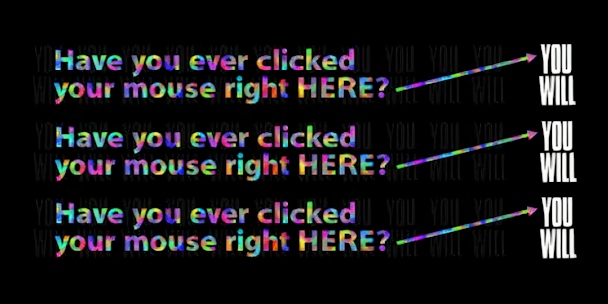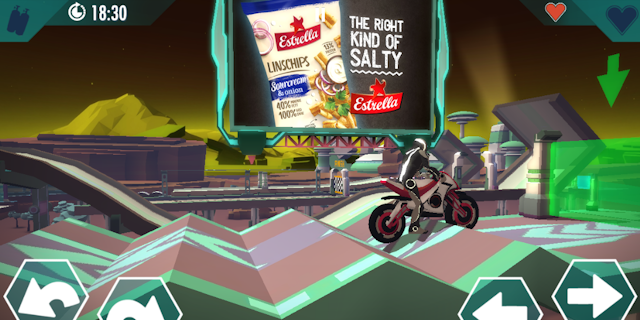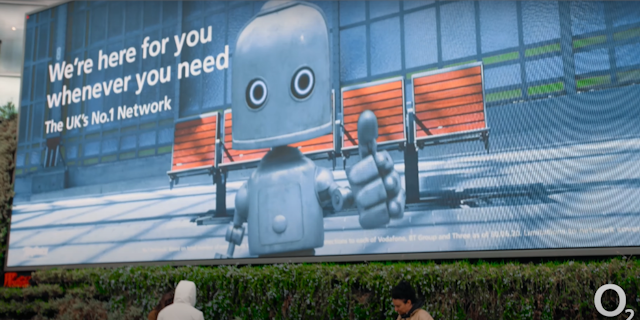Why you need brand awareness campaigns to support growth
Back in 1994, the first-ever banner ad went live. Over four months, the AT&T banner ad produced a click-through rate of 44%. That kind of CTR is nothing more than a pipe dream now. Today, the average CTR of a PPC campaign in AdWords is 2% on the search network and 0.35% on the display network.

Anzu look at the history of the banner ad, dating back to the first above, which went live on October 27 1994
Low-performance campaign CTRs are due to multiple factors. Over the years, consumers have developed banner blindness. Then marketers had to contend with the rise of ad blockers. Now marketers have been further crippled by the death of the cookie and Apple’s introduction of App Tracking Transparency (ATT).
That’s not to say that performance marketing is dead. It has a well-established value and is effective, particularly for short-term objectives, but the shine of chasing conversions has dulled.
So, what’s a marketer to do? They need to rethink how they combine performance marketing and brand awareness campaigns. The campaign types are two sides of the same coin, yet serve different purposes.
Advertisers should use performance campaigns to drive immediate product purchases or send users to a landing page to collect their contact details. But they should also incorporate brand awareness campaigns with the long-term goal of increasing recognition, recall and brand trust, all of which are important for developing brand equity.
While performance marketing campaigns used to get all the glory because they were measurable, today’s brand awareness campaigns have leveled the playing field, offering equally compelling measurability. What’s more, and what’s tugging on big brands’ purse strings, is that brand awareness campaigns offer incredibly innovative ways to connect with audiences, building affinity and loyalty.
The new brand awareness channels capturing brand and consumer attention
The most forethinking AdTech companies understand that today’s consumers want to be engaged by brands, not just have ads thrown at them. These tech companies have developed opportunities for advertisers to do just that by reinventing how advertising works. Two channels have emerged as go-to options for increasing brand awareness: in-game ads and digital out-of-home signage (DOOH).
In-game ads play to win attention
Gamers are an ever-growing, high-value – yet hard to reach – audience. While this segment of nearly 3.4 billion consumers used to tolerate in-game popup performance ads, the tides have shifted. They are no longer acceptable as they disrupt the gaming experience.
To eliminate the intrusive nature of performance ads within gaming environments, blended in-game brand awareness ads have emerged as a top channel for brands. Food and beverage brands such as Estrella, McDonald’s and 7-Eleven have all tapped into this space. Many fashion and beauty brands, including Louis Vuitton, MCM, Glossier, Gillette and Tatcha, launched in-game awareness campaigns, offering players access to digital versions of products and clothing items that they could also purchase in the real world.

Estrella in-game ad inside Gravity Rider Zero. Credit: Anzu.io
What these brands are acutely aware of is that gaming is an enjoyable activity. Part of the psychology behind in-game ads stems from the idea that the positive emotions and connectivity players experience is transferred to the brand. Brands benefit from the user-positive context, gaining favorability, memorability and familiarity.
DOOH campaigns physically engage viewers
Like banner ads, consumers have become less attentive to static OOH campaigns. That has created an opportunity for more attention-grabbing digital signage to leverage signals to show those passing by more relevant campaigns.
The fact that DOOH ads can be served programmatically and measured is why the category attracts more ad spend. One study found that of the 52% of Americans who saw a digital sign in one week, 55% recalled the specific brand message. Additionally, four of five brands that ran DOOH campaigns experienced a 33% increase in sales.
Innovation and technology powering DOOH ads enabled Skoda to let people explore the features of its new range of SUVs and book test drives just by using hand gestures in front of the sign. CVS launched an interactive campaign in Times Square to reinforce its brand pitch of celebrating everyone’s beauty by encouraging people to upload unedited selfies to social media. The company published a new piece of UGC every ten seconds, generating more than 3.6 billion impressions. O2 ran a DOOH campaign in London that built a strong connection with those who saw it by having a digital robot on the screen interact and mimic people’s movements as they looked at the sign.

Screenshot from a commercial showing O2’s latest digital Out of Home (OOH) campaign ‘Follow Me’ in London. Credit: Grand Visual Theory Ltd
Combine tactics to create a memorable brand and boost sales
A Harvard Business Review confirmed that people instinctively purchase from familiar brands, so brand awareness can no longer take a back seat. It is a critical campaign objective for driving sales in the long run. By capturing users’ attention in innovative ways, at moments when they are ready to engage and on platforms where they spend time, brands can develop that coveted relationship.
The metrics for performance campaigns have clear-cut KPIs that are easy to measure. Determining an increase in brand awareness stems from metrics such as brand recall, consideration and memorability. Today’s advanced advertising technologies enable marketers to connect online and offline consumer interactions, correlating those with sales. As marketers look to maximize ROAS and ROI, they must use all of these metrics to make the most accurate assessments.
Armed with a complete picture, advertisers can make more intelligent, data-backed decisions about their media spends. It’s critical to first ensure that products and brands are kept top-of-mind through brand awareness campaigns. Then advertisers should follow through with performance campaigns to increase conversions and sales. No ad campaigns should exist in a vacuum, and pushing both types of campaigns forward is the one-two combo punch brands need to thrive.
Itamar Benedy is co-founder and chief executive officer at Anzu.
Content by The Drum Network member:

Anzu
Anzu is the most advanced intrinsic in-game ad solution for mobile, PC, console, and the metaverse. Anzu’s in-game ads put players first and help advertisers reach...
Find out more
